Heel Spur and Physiotherapy Management
What is a Heel Spur?
- A Heel spur, also known as a calcaneal spur, occurs when a bony outgrowth forms on the heel bone. Calcaneal spurs can be located at the back of the heel (dorsal heel spur) or under the sole (plantar heel spur).
- The dorsal spurs are often associated with Achilles Tendinopathy, while spurs under the sole are associated with Plantar fasciitis.
- The apex of the spur lies either within the origin of the plantar fascia (on the medial tubercle of the calcaneus) or superior to it (in the origin of the flexor digitorum brevis muscle).
- The relationship between spur formation, the medial tubercle of the calcaneus, and intrinsic heel musculature results in a constant pulling effect on the plantar fascia resulting in an inflammatory response.
Anatomy related to Heel spur

- There are numerous muscles (Soleus, gastrocnemius, plantaris, abductor digiti minimi, flexor digitorum brevis, extensor digitorum brevis, abductor hallucis, extensor hallucis brevis, quadratus plantae) and the plantar fascia which exert a traction force on the tuberosity and adjacent regions of the calcaneus, especially when excessive or abnormal pronation occurs.
- The origin of the spurs appears to be caused by repetitive trauma which produces micro tears in the plantar fascia near its attachment and the attempted repair leads to inflammation which is responsible for the production and the maintenance of the symptoms.
Pathophysiology
- Continued overstrain of the plantar fascia results in the stripping of the periosteum from its origin at the calcaneus. the gap thus form is filled up by the proliferation of bone, resulting in the formation of the bony spur to secure the detached attachment.
- occasionally bursa forms over the bony spur which may get inflamed resulting in pain.thus calcaneal spur is late sequele of plantar fascitis.the calcaneal spur may not always be painful. once formed this spur is permanent and an attempt to remove it results in its recurrence.
Symptoms of Heel spur
- The painful heel is a relatively common foot problem, but calcaneal spurs are not considered a primary cause of heel pain. A calcaneal spur is caused by long-term stress on the plantar fascia and foot muscles and may develop as a reaction to plantar fasciitis.
- The pain, mostly localized in the area of the medial process of the calcaneal tuberosity, is caused by pressure in the region of the plantar aponeurosis attachment to the calcaneal bone. The condition may exist without producing symptoms, or it may become very painful, even disabling.
- Most heel pain patients are middle-aged adults. Obesity may be considered a risk factor. Not all heel spurs cause symptoms and are often painless, but when they do cause symptoms people often experience more pain during weight-bearing activities, in the morning or after a period of rest.
Causes of Heel Spur
- Peroneal tendonitis
- Haglund’s deformity (with or without bursitis)
- Sever’s disease (calcaneal apophysitis): inflammation of the calcaneal apophysis due to overloading
- Traumatic Influences
- Calcaneal fractures (and stress fractures): fractures as a consequence of repetitive load to the heel
- Baxter nerve entrapment: (chronic compression of the first branch of the lateral plantar nerve)
- Tarsal tunnel syndrome (sinus tarsi): Impingement of the posterior tibial nerve
- Clinical (Tinel’s sign, dorsiflexion-eversion test)
- Heel fat pad syndrome: Atrophy or inflammation of the shock-absorbing fatty pad or corpus adiposum
- Chronic lateral ankle pain with other causes.
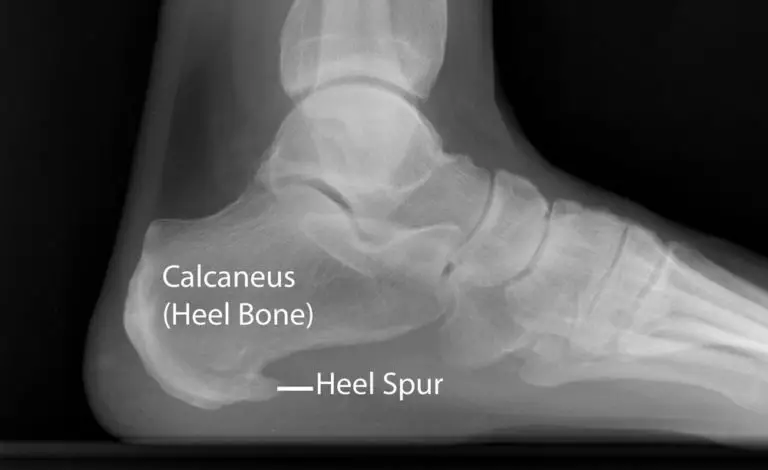
Diagnosis of Heel spur
- A diagnosis is based on the patient’s history and on the results of the physical examination. Diagnosis is usually confirmed by X-ray, but other diagnostic adjuncts are also used.
- Radiology may show calcaneal spur formation or calcification at either the insertion of the Achilles tendon or the origin of the plantar fascia. Rarely is an MRI required.
Treatment of Heel Spur
Resting may not be the best solution for heel pain caused by plantar fasciitis and heel spurs. Following a night of sleep, the plantar fascia abruptly elongates and pushes on the heel, making the discomfort seem higher when you walk. The more you walk, the less painful it usually is. However, a lengthy period of relaxation or a lot of movement may cause you to experience discomfort again.
Over-the-counter drugs such as acetaminophen (Tylenol), ibuprofen (Advil), or naproxen (Aleve) may help relieve heel pain. Many times, biomechanical abnormalities that lead to heel and arch discomfort can be resolved with a functional orthotic device. In certain situations, a corticosteroid injection may be used to reduce localized inflammation.
Surgery for Heel Spurs
Nonsurgical procedures improve the condition of almost 90% of patients. In order to ease discomfort and regain mobility, surgery can be required if conservative therapy for heel spurs is ineffective after nine to twelve months.
Surgical methods consist of:
- Release of the plantar fascia
- Removal of a spur
To choose the best patients for surgery, pre-operative examinations or tests are necessary. It’s also critical to follow post-operative instructions on rest, ice, compression, foot elevation, and when to put weight on the operated foot. Following surgery, patients may occasionally need to utilize bandages, splints, casts, surgical shoes, crutches, or canes.
Nerve discomfort, persistent heel pain, infection, scarring, and permanent numbness in the affected area are all potential side effects of heel surgery. Furthermore, there is a chance of tendinitis, stress fractures, foot cramps, and instability following plantar fascia release.
Physiotherapy management
- ULTRASOUND THERAPY: Ultrasound is a therapeutic modality that generates ultrasound causes deep heat, provides micro-massage to soft tissue, increases flexibility, promotes healing of tissue as well improves localized blood supply to the area and ultimately pain relief.
- Cold therapy is used to relieve inflammation and reduce pain, Ice Massage- Ice on the area of inflammation for anti-inflammatory effects. Use ice in a paper or Styrofoam cup (peeled away) for 5-7 minutes, make sure to avoid frostbite.
- Heat therapy loosens tense muscles and promotes oxygen and blood flow to the affected area. Thermotherapy might be useful for the reduction of pain during exercises.
- Paraffin wax bath
- paraffin wax bath therapy is an application of the molten wax on the body parts. It acts like a form of heat therapy and can help increase blood flow, relax muscles, and decrease joint stiffness. Paraffin wax can also minimize muscle spasms and inflammation as well as treat sprains.
CONTRAST BATH:
- contrast bath work works on the principle of the combined effect of heat and cold the part alternatively immersed in the hot and cold temperature of hot water ranges from 36c-45c and cold water from 15c -20c.
- treatment begins with hot water and should end with cold water. treatment time varies between 15 to 30 minutes, with immersion in hot water around 3 minutes and in cold water around 1 minute. It relieves the pain.
- Low-level laser therapy: laser therapy is found to be an effective method for treating heel spurs.
FARADIC FOOT BATH:
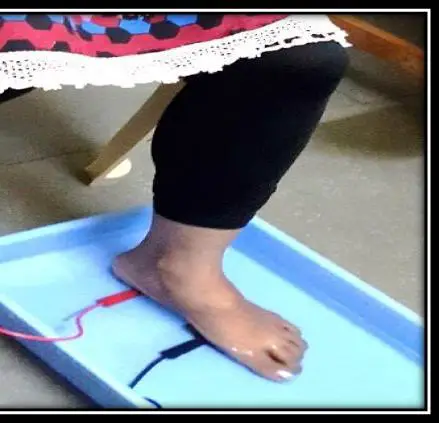
- faradic foot bath with voluntary intrinsic exercise: low-frequency current used to re-educate lumbricals, plantar interossei, abductor hallucis.
- Night Splints: A conservative treatment in combination with the use of a night splint that keeps the ankle in 5 degrees of dorsiflexion for eight weeks; Patients without previous treatments for plantar fasciitis obtain significant relief of heel pain in the short term with the use of a nightsplint incorporated into conservative methods; however, this application does not have a significant effect on prevention of recurrences after a two-year follow-up.
Heel pad
- Heel inserts or Heel spur pads should relieve heel spur pressure and inflammation catch shock forces and distribute them evenly throughout the heel reducing stress.
- However, Chia suggested that Heel spur pads were ineffective in reducing rearfoot pressure and increased rearfoot peak forces while orthotics and customized orthotics reduced rearfoot peak forces on both sides. Pre-fabricated and customized orthotics are therefore useful in distributing pressure uniformly over the rearfoot region.
- Footwear Modification
- Footlogics: provide relief from Plantar Fasciitis (heel pain and heel spurs), Achilles Tendinopathy, and forefoot pain. Aims to correct overpronation, fallen arches, and flat feet.
- Insoles: Patients with heel pain, diagnosed as Sever’s injury, wore insoles with no other treatments added and all patients maintained their high level of physical activity throughout the study period. Significant pain reduction during physical activity when using insoles was found.
Toe splay
- Sit in a straight-backed chair with feet gently resting on the floor.
- Spread all toes apart as far as comfortable. Hold for five seconds.
- Repeat 10 times.
Toe curls
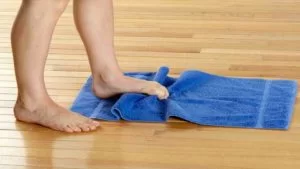
- Sit in a straight-backed chair with feet flat on the floor.
- Lay a towel on the floor in front of the leg so the short end is at your feet.
- Put the toes of one foot on the end of the towel, scrunch the toes, and pull the towel toward you.
- Repeat 10 times.
Marble pickup
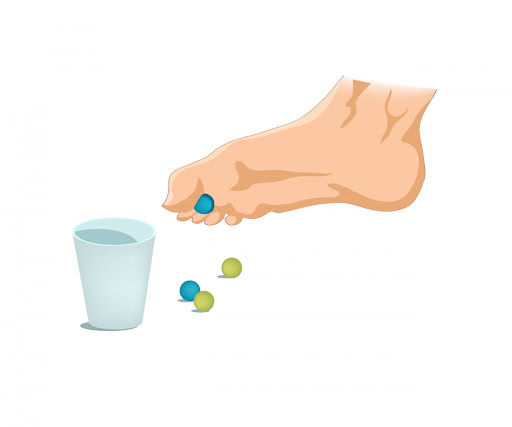
- Sit in a straight-backed chair with feet flat on the floor.
- Place 20 marbles and a small bowl on the floor in front of the leg.
- Pick up one marble at a time with toes and place it in the bowl. Use one foot to pick up all 20 marbles.
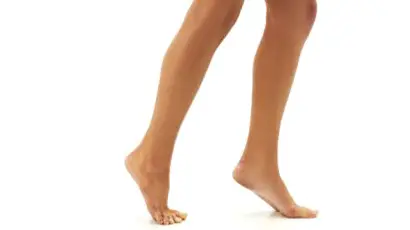
Toe walking
- remove your shoes and walk on your toes.
Prevention of Heel Spurs
Wearing supportive heel counters, solid shanks, and shock-absorbing footwear in well-fitting shoes can help avoid heel spurs. You should also select shoes that are suited for the physical activity you’re performing, warm up and stretch before it, and take it slow while doing it.
Stay away from shoes with too much wear on the soles or heels. Reducing your weight if you are overweight may also assist in avoiding heel spurs.
Conclusion
Your plantar fascia, the ligament on the bottom of your foot, can get damaged by tension and pressure, leading to a heel spur. Your heel pain is typically not caused by heel spurs. When you seek treatment for heel pain, you most likely discover that you have a heel spur.
You should still be mindful of your heels even if your heel spur is not the source of your heel pain. Consult your healthcare physician about other measures you may take to relieve heel pain if it hurts while you perform specific activities.
FAQ
How do I get rid of a spur in my heel?
Heel spurs are permanent once they develop. A heel spur cannot be removed other than surgically. Treating the underlying cause of your heel spur should help reduce your heel pain, as these growths often don’t cause pain.
How do you remove a heel spur?
Utilizing specialized surgical burrs, the spur is extracted while simultaneously releasing the plantar fascia’s inner (medial) band. When treating heel spurs, keyhole surgery has a less complicated recovery than traditional “open” orthopaedic methods and is rarely linked with problems.
What does a heel spur feel like?
Tenderness or pain in the affected foot’s heel that may throb, feel dull, or be acute. inflammation where the spur is located, which is at the base of the heel. discomfort when exercising or walking barefoot or without supporting footwear. the sensation of a little, bony lump on your heel’s back or bottom.
How long does a heel spur last?
Although the painful symptoms of a heel spur are incurable, conservative treatment can prolong its duration. Furthermore, a large number of people also have asymptomatic heel spurs that are not painful.
Is walking OK for heel spur?
Resting may not be the best solution for heel pain caused by plantar fasciitis and heel spurs. Following a night of sleep, the plantar fascia abruptly elongates and pushes on the heel, making the discomfort seem greater when you walk. The more you walk, the less painful it usually is.
Is it OK to massage a heel spur?
You can ease pain and relax the surrounding muscles by rubbing the sole of the foot. Furthermore, massage can promote blood flow and aid in the healing process.
Can you get rid of a heel spur naturally?
Natural home treatments might also be beneficial in less severe situations. The best cures include coconut oil, baking soda, apple cider vinegar, and Epsom salts. It’s also crucial to remember that individuals with heel spurs have to relax whenever they can.
What vitamin is good for bone spurs?
Minerals and vitamins are a crucial line of defense against bone spurs. Make sure you are not lacking in calcium especially if you have osteoarthritis. You should also make sure that your levels of magnesium and vitamin D are within the ideal range since these nutrients are necessary for the absorption of calcium.



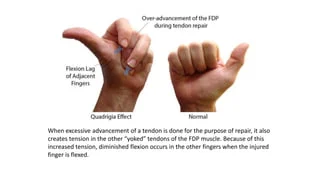
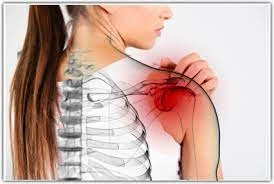
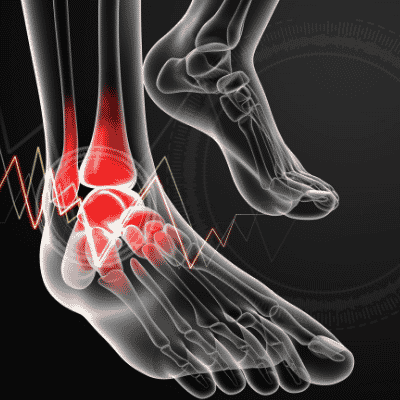

4 Comments